







BEIJING, Sept. 28 (Xinhua) Recently, the 2018 China Milk Merchants Index Report (hereinafter referred to as the Report) jointly sponsored by many authoritative organizations was released in Beijing. The report puts forward the concept of "milk merchant" for the first time, and makes an in-depth study on the present situation of milk drinking in Chinese from three dimensions: milk drinking consciousness, milk drinking knowledge and milk drinking behavior, which has aroused great concern in the industry. According to the report, in 2018, the score of China Milk Merchants Index was only 60.6, which means that Chinese people’s awareness, knowledge and behavior of drinking milk are at a low level. So, how do Chinese people know about drinking milk? How to improve the consumption of Chinese dairy products? How to choose dairy products at different ages? In this regard, Fan Zhihong, an associate professor in the Department of Nutrition and Food Safety, College of Food Science, China Agricultural University, gave professional answers to these questions.

Chinese does not fully understand the benefits of eating milk.
Milk is recognized as a nutritious drink in the world. However, Professor Fan Zhihong pointed out that Chinese people’s understanding of milk is not comprehensive enough except that it can supplement human nutrition. For example, most people don’t know the benefits of drinking milk for chronic diseases such as hypertension, heart disease and diabetes, and its role in preventing obesity, so they are not motivated enough when choosing dairy products.
Fan Zhihong further exemplified that for patients with hypertension, they need more minerals such as potassium, calcium and magnesium, and dairy products are not only rich in calcium, but also have a low potassium content, which is suitable for patients with hypertension. Many studies in the last two years have also proved that the risk of stroke will also decrease when the intake of dairy products is sufficient. Therefore, Fan Zhihong suggested that people with hypertension and cerebral thrombosis should actively consume milk, especially yogurt with low sugar content.
For people who need to prevent obesity, choosing milk and yogurt instead of cookies, snacks, potato chips, cakes and other snacks with high calories will reduce the risk of gaining weight, because the comprehensive nutritional value provided by milk is far superior to these snacks.
Therefore, to a certain extent, for the 4% people who never drink milk as shown in the China Milk Merchant Index Report in 2018, it may be an important reason why they don’t drink milk because they don’t realize the benefits of milk.
Diversified ways of eating are the key to increase the consumption of dairy products.
The consumption habit of dairy products in China determines that most people prefer to "drink" rather than "eat" milk. In foreign countries, milk is made into food such as cheese, and people not only "drink" but also "eat" milk. Then, according to Chinese people’s eating habits, how to increase the consumption of dairy products?
Fan Zhihong said that people can choose their own acceptable and easy-to-operate dairy products according to their physical condition and their tastes, instead of just drinking milk. For example, some adults feel uncomfortable when they drink milk, so they can consider drinking yogurt or goat milk. You can also incorporate milk into other foods, such as putting milk in oatmeal at breakfast, or putting milk in steamed bread, cakes and bread, so that the pasta will be better in flavor, color and taste.
In addition, for middle-aged and elderly people, it is not necessary to choose milk, but also consider choosing yogurt, because yogurt can be better digested and absorbed by lactic acid bacteria fermentation, and it is also very friendly to the stomach of the elderly, and it is not easy to appear lactose intolerance. In view of the fact that some elderly people think that yogurt is cold and cold, which will cause stomach discomfort, Fan Zhihong pointed out that yogurt doesn’t have to be cold, but it can be eaten after it is hot, or it can be eaten with some hot food, or even drunk with some hot milk. By eating milk in a variety of ways, the consumption of milk will naturally increase.
How to drink milk correctly for people of different ages and with special needs?
For example, for teenagers and pregnant women, how should we drink milk to help the body absorb it better?
Fan Zhihong pointed out that the growing teenagers need a lot of calcium to support their bone growth, because they grow up quickly. Therefore, if parents want their children to grow taller, they should take more calcium in moderation during their adolescence, including adding half a catty of dairy products every day.
Pregnant women are very suitable for drinking milk or other dairy products, and they are more important than the average person. Because pregnant women not only need to supplement their own calcium, but also need to provide the calcium needed by the fetus during the process of fetal gestation. Therefore, pregnant women should drink one more glass of milk than normal. Generally, pregnant women and nursing mothers are encouraged to drink two cups of milk every day at home and abroad, which is about a catty.
For menopausal women, Fan Zhihong suggested that they should insist on taking enough calcium as adults of other ages, and even increase it appropriately, but if the amount is increased, it can be added through a variety of foods. At the same time, the increased amount of milk should be used to replace unhealthy food, not staple food or vegetables, otherwise it may not be healthy. In addition, milk is only one of the contributors to bone health, and it cannot replace exercise, nor does it provide other sufficient nutrients such as potassium and magnesium. It is still necessary to eat enough vegetables and beans.
Finally, Fan Zhihong pointed out that milk, like fish, eggs, vegetables, grain and other foods, is a part of our healthy diet plate, which can bring nutrients and health care ingredients to the human body. It is not necessary to exaggerate it or belittle it. We should scientifically understand its benefits and eat it scientifically. In this respect, Chinese people need more popular science education.
Explore the track of the world-class army building times
■ Xu Wei
Quote
In the picture of human history, war and military development are particularly eye-catching. When we turn our eyes to the historical long river of beacon fire, it is not difficult to find that in the magnificent world change, the strength of the army has always been accompanied by the prosperity of the country, and every era has ushered in a first-class army. Exploring and studying the track of the times in the development of these armed forces and finding out something with regularity will undoubtedly provide us with important enlightenment and reference for realizing the goal of building the army for a hundred years as scheduled and accelerating the building of the people’s army into a world-class army.
Taking military needs as the traction and strengthening capabilities as an urgent task.
Military capability has always been the most critical link in the national security system. From the course of military construction and development in major countries in the world, it can be found that military construction always takes strengthening military capabilities as an urgent task, and military capabilities have been generally regarded as the ultimate standard to measure military strength and the primary task of war preparation. Especially in recent years, some military powers have continuously issued forward-looking military capability assessment and prediction reports, emphasizing the vigorous development of military deterrence and response capabilities. It can be said that strengthening military capability is in the critical period of Qian Fan’s competitive development, which is a rare opportunity period for developing countries. History and practice tell us that the construction of first-class military capabilities needs to firmly grasp the window of transformation from quantitative accumulation to qualitative leap, starting from the military’s historical mission and taking stopping and winning wars as the standard. At present, the major military powers focus on the need of strategic application, constantly expand into space, distant sea, deep ground, network, electromagnetism and other spaces, plan ahead, step up to fill the "vacancy" of new combat forces, and develop military technology and equipment with decisive influence in new areas and new qualities, with the intention of seizing the "new commanding heights" of future military competition and building a lasting military advantage, which also reflects that the structure of military capabilities will undergo a fundamental mutation and leap. For example, the US military accelerates the development of military capabilities in the direction of "integration, both offensive and defensive, multiplication of advantages, rapidity and accuracy", in an attempt to realize the deep integration of information, firepower, defense, security and control, and form a system capabilities with one operation, multi-domain joint and rapid support.
Take training and preparation for war as the starting point and military training as the central task.
Only when a scholar is skilled in technology can he be good at fighting; Just in case, an Guo often says. Training and preparing for war is the central task and normal presentation of the first-class army. Only by training and preparing in peacetime can we win in wartime. If a country does not make great efforts to improve its army’s winning ability and is ready to deal with possible military conflicts and potential war threats at any time, once war breaks out, it will fall into a passive position and its national security and development interests will be greatly damaged. The practice of army building in some countries in the world has proved that first-class training and preparation for war must always be based on the mission and task, insist on using the military struggle leader to control the combat preparation and continue to exert strength on the actual training and preparation, use the training and warfare as a whole to control the actual combat training to jump to high intensity, normalization and systematization, and use the standard of winning and controlling the combat effectiveness to establish and advance to the heights, depths and realities, so as to truly focus all work on preparing for war and invest all resources in preparing for war. In recent years, the development of the Russian army has benefited to a great extent from always insisting on shaping the situation through training, strengthening preparation through training, and promoting war through training. In particular, it attaches great importance to carrying out a series of targeted combat training to enhance the deterrent ability of clusters in various strategic directions, thus changing the image of the army earlier. It is noteworthy that major military powers are taking the promotion of military intelligent means as an important part of training and preparing for war, closely focusing on the liberation and development of combat effectiveness, and integrating key technologies such as artificial intelligence and autonomous technology of unmanned combat systems into preparing for war, guiding the implementation of operational theory, military personnel and weapons and equipment modernization tasks.In order to speed up the formation of a new pattern of modernization of the ability system for preparing for war, it shows the distinctive characteristics of the times in training and preparing for war.
Taking the integration and energy gathering as the direction and the system layout as the key point.
The joint operation of land, sea, air and space power grids and the operational trend of multi-domain integration system characterized by cross-domain interaction urgently need to plan and construct an integrated operational system layout with deep integration of "detection, strike, control, prevention and protection" from the "long" perspective to form a system victory. This has become the focus of major military powers to promote the construction of first-class troops. In recent years, the concepts of "air-sea integrated warfare", "joint global warfare" and "multi-domain warfare" put forward by the US military are actually systematic products of organically combining air-sea space-based forces, land-based strike forces and network power, which means that the US military is fully committed to optimizing the global layout of military forces through cutting-edge technological advantages in order to meet the arrival of new war forms. Nowadays, the era of winning by relying solely on the advantages of combat units is over. Instead, it is to build a combat force system that combines far and near, soft and hard, and ensure that key areas are controlled by the offensive and defensive advantages of the system. Therefore, the key to the systematic layout of joint operations is to gather the combat energy advantages of different quality areas and quickly integrate all combat modules into the system operations, so as to achieve a composite offensive and defensive situation layout with system synergy, overall linkage, accurate energy release and mutual cooperation. In recent local wars and armed conflicts, the role of information network in the system layout has been shown, which enables multi-combat forces to make decisions and control independently, adaptively, interactively and intelligently. In future operations, we should strengthen the intelligent advantage layout of "cloud" and "net" gathering, skillfully combine tangible forces with intangible "cloud" and "net" layout, and accelerate the formation of operational layout of combining reality with reality and gathering strength.It will become a new model and new trend of system potential distribution and energy accumulation.
Taking the advantage as the main purpose, the joint ownership is the priority option.
Modern warfare is first launched and highly dependent on comprehensively seizing and maintaining the comprehensive control right of the battlefield, which embodies the special significance of the struggle for control right to the war dominance. And planning the joint action of key control operations plays a crucial and decisive role in competing for the control of key dimensions. Among them, winning the information advantage is the key to joint ownership. The United States, Russia and other military powers generally believe that various combat forces in the era of information and intelligence must take the control advantage of multi-domain space as the basis for carrying out multiple tasks. The Russian army emphasizes improving the timeliness and anti-interference of joint combat force delivery, and defeating opponents with cross-domain coordination and gathering Excellence. This shows that, in the struggle for control, we must first keep the initiative strategically, that is, strategically establish the direction, goal and path for obtaining the joint control right, stipulate the means and methods for creating and applying the overall advantage, and form an advantageous position in intelligent technology and weapon system, information acquisition and utilization and control ability. At present, some military powers take "big data intelligent technology and super network technology" as the "key catalyst" to seize control, aiming to form a decisive military advantage, which is a major strategic turn of military powers since military informationization. In the future competition for power control, only by building an intelligent efficiency link and control relationship with parallel flow and high aggregation of material information can the joint power control efficiency emerge through linkage and energy accumulation.
Focusing on battlefield confrontation, improving efficiency is the key factor.
Military activities and combat forces are inseparable from the physical and virtual battlefields of multi-dimensional space confrontation, and the rapid integration of multiple fields forms an integrated battlefield system, which makes the pursuit of maximizing the benefits of confrontation become the key to battlefield confrontation, and it is also a subject that needs to be highly valued in building a first-class army. In recent years, major military powers have accelerated the construction of comprehensive information systems covering the full-dimensional space of the battlefield and pursued the overall benefits of battlefield confrontation. At present, the US military has nearly 10,000 intelligent unmanned information network systems in the air and on the ground, and they are still being continuously upgraded. Focusing on solving the bottlenecks such as the difficulty in dealing with information-based battlefield accusations and the paralysis of the combat system, the future focus of battlefield system construction will be to establish a more perfect and flexible control system and operation mechanism based on the intelligent system of rapid independent decision-making, efficient information processing, precise coordinated operations and automatic control of weapons and equipment, and pay attention to doubling the effectiveness of battlefield cognition, command and control, precision strike and information attack and defense confrontation. In addition, around the control of the battlefield space, the future battlefield confrontation will present a "flash" of strength, highlighting the joint attack of multiple forces, rapidly accumulating strength, and suddenly exerting strength, forming a trend of hard and soft integration; The "quick integration" of means effectively integrates and uses various means to gather the combat energy of different quality areas, forming a multi-dimensional coordinated and prudent trend of attacking and helping the defense; The "quick fight" in action, real-time scene and efficient decision-making, seize the favorable opportunity, and form the local advantage of the battlefield with rapid and high-intensity suppression in the whole region. This is the focus of the research and application of battlefield confrontation by major military powers at present, and it will certainly become a new scene and new content for both sides to pay attention to combat.
Take foresight as the first step and scientific and technological innovation as the strategic support.
With the rapid development of the new round of scientific and technological revolution, industrial revolution and military revolution, the leading role of artificial intelligence, big data, cloud computing and other technical fields is prominent. Major military powers pay more attention to the continuous promotion of innovation in an important position, and systematically plan and build ahead in innovative concepts, models, standards, systems and applications, providing important strategic support for building a first-class army. After World War II, some countries became military powers, and one of the most important fulcrums was the extensive use of the latest science and technology, which produced new areas and new quality combat forces and promoted the leap-forward development of military combat effectiveness. At present, major military powers insist on using cutting-edge technologies to make innovative breakthroughs, and step up research and development of operational platforms with faster speed, higher information intelligence content and greater damage efficiency in an attempt to maintain an absolute leading position. It should be noted that the century-old changes in the world have accelerated the evolution, and the new military revolution is in the ascendant, which makes it more important to judge the direction of scientific and technological innovation. As an accelerator to promote the construction and development of the first-class army, scientific and technological innovation has become more obvious, especially in the key areas and key means, and key breakthroughs have been made to promote system capabilities’s multi-dimensional attack and defense and accelerate the overall transformation in the military field. This requires accurate prediction of the new forms and features of future wars, continuous application of advanced technological achievements, efforts to promote the fundamental transformation of the generation mode of combat effectiveness, and accelerate the formation of powerful asymmetric winning and strategic checks and balances. This is the first move and strong support for first-class army building.
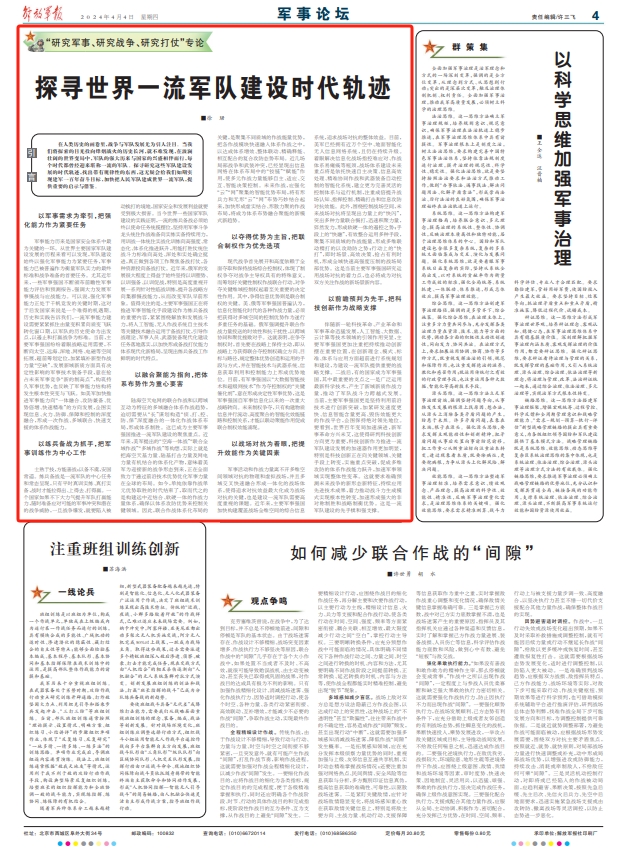
CCTV News:
[Keywords:] Hui Nantian
According to CCTV-13 news channel "News Live Room", since the winter of 2018, it has been raining continuously in many provinces and cities in southern China, and the sun has become a rarity. In response to the continuous rainy days, many southern netizens not only spit out: It is not only the earth that wanders, but also the sun?

Southern friends call this continuous rainy weather "going back to the south". "Returning to the South Sky" is a weather phenomenon in southern China. From March to April every year, the warm and humid airflow blowing from the South China Sea in China meets the cold air coming from the north of China, which makes the weather in southern China uncertain and very humid, with light rain or fog during the period, resulting in the phenomenon of "returning to the South Sky".
Now everyone is most concerned about when this "longest rainy season" will end. Sun Jun, chief forecaster of the Central Meteorological Observatory, said that the continuous rainy weather has a great impact on agriculture, and at the same time it has a certain impact on people’s production and life, health and transportation in the southern region. It is expected that the rainy weather in the southern region will continue in early March, and the accumulated precipitation in many places is more than 50% than normal.
Keywords: Post-holiday rent market survey
According to CCTV-13 news channel "News Live Room", after the Spring Festival, the rent market in large and medium-sized cities such as Beijing and Hangzhou is more active. Regarding the trend of the national rent market this year, experts said that the housing rental market will remain in a relatively stable state.

Liu Weimin, a researcher at the State Council Development Research Center, said: "I feel that with the policy orientation of" staying and not speculating "and a series of macro-control policies for housing being put in place, especially the main responsibility of local governments for real estate regulation and control, in some first-tier cities, including some hot-spot second-tier cities, we see that with the completion and launch of relevant policy-based housing products, the overall rental market will show a relatively stable operation trend under these backgrounds."
[Keywords:] Demolition of "Mountain Villa"
According to CCTV-13 news channel "News Live Room", recently, some media reported that there were cases of cutting mountains to build villas in Shijiazhuang, Hebei Province. These illegally built villas on 19 acres of land have neither a development certificate nor a sales certificate, but these illegally built villas have already been developed and sold. Once reported by the media, the local reaction was extremely rapid, and the secretary of the Hebei Provincial Party Committee gave instructions, and the villa began to be demolished that day.

Experts believe that introducing the tertiary industry into rural areas and developing tourism and leisure projects are effective ways to realize the strategy of rural revitalization. With the introduction of tourists, the public health service and infrastructure construction in the surrounding areas will inevitably improve accordingly. However, it is undeniable that due to the lack of strict planning approval and scientific ecological assessment, in recent years, there have been many counterproductive examples in various parts of the country: for example, in order to build luxury villas, the famous scenic spot "Lover Lake" in Erhai Park in Dali was completely landfilled, and the Ciyun Temple scenic spot in Qinglong Mountain, Henan Province also cut down thousands of square meters of trees; In Gaolan County, Lanzhou, more than 10,000 mu of green land has become a desert, resulting in scars that can never be healed.

In recent years, the tentacles of illegal development of real estate projects have gradually penetrated into poorly regulated and unknown mountainous areas and rural areas from the urban fringe and famous scenic spots. Experts appeal that in order to curb this trend, in addition to strengthening supervision, three red lines must be drawn, namely, the red line of cultivated land, the red line of ecological land and the red line of construction land, and the development should be limited to the red line.
[Keywords:] online celebrity formaldehyde detector
According to the weekly quality report of CCTV-13 news channel, in recent years, consumers have paid more and more attention to the safety and comfort of their living environment, especially the air quality in their homes after renovation. Some merchants have seen the business opportunities and introduced formaldehyde detectors which are cheap and easy to carry, and the sales on the Internet are good. Are the test results of these detectors accurate?
The result is surprising: there are more than 20 brands and more than 40 samples, and none of the formaldehyde detectors in online celebrity have reliable test results.

According to the reporter’s investigation, the problems reflected in this risk monitoring have attracted the attention of the regulatory authorities.
Tian Yilong, head of the Metrology Department of Shanghai Municipal Market Supervision Bureau, said: "In fact, from its publicity and the analysis of our test results, there is indeed a suspicion of misleading consumers. In the next step, we will release some corresponding risk monitoring results to the society, and put forward some relevant early warning information to the society, especially consumers. At the same time, we must also urge production enterprises to continuously optimize product design, strengthen quality control and improve product standards. "
[Keywords:] young people chasing the moon
According to CCTV-13 news channel Newsweek, in May 2018, Queqiao, the relay communication satellite of Chang ‘e-4 mission, was launched, and Longjiang-2 small satellite went to the moon together, and now it is orbiting the moon. It is equipped with a miniature camera, waiting to receive the signal, which is a group of young post-90 s students of Harbin Institute of Technology.

Like collecting hand-made, playing games, or obsessed with military weapons, the members of the satellite team are no different from ordinary students, but time is limited, and sometimes they can only ignore these hobbies. Sending the names of favorite singers into space or collecting postcards of "We live for dreams" is their unique romance. Nowadays, this young team has been involved in new projects, and the attention and praise of the media have not changed their pace. The dream of space is long and long, and everything has just begun.
[Keywords:] selling tickets by height
According to CCTV-13 news channel Newsweek, is it reasonable and legal for height to be used as the standard of children’s discount tickets? On February 18th, Guangdong Consumer Council filed a public interest lawsuit on behalf of consumers in response to the height standard of children’s tickets of Guangzhou Changlong Group, and Guangzhou Intermediate People’s Court has filed a case for acceptance.

After investigation by Guangdong Consumer Council, it is considered that the height of 1.5 meters in many amusement places of Changlong Group restricts most underage consumers from buying discount tickets, which is equivalent to "punishing tall people" in disguise, which is unfair and discriminatory to minors who grow tall and fast. It is a legal right for minors to enjoy fare concessions. According to international practice, age should be the criterion for the classification of children’s tickets.
Therefore, the Guangdong Consumer Council requested that Changlong Group stop "selling tickets by height" and give all underage consumers the preferential treatment they deserve. It is worth looking forward to whether this first domestic public interest litigation for the protection of minors’ consumer rights can break the old rule of "selling tickets by height".
Keywords: relocation of US military bases
According to CCTV-13 news channel "News Live Room", on the morning of 24th, Okinawa Prefecture of Japan held a referendum on the relocation of the Futenma base of US troops stationed in Japan. The citizens of the county who voted will express their opinions on whether to support the relocation of the Futenma base of the US military stationed in Japan to the ancient border area in the county.

The Futenma base of American troops stationed in Japan is located in Ginowan City, Okinawa Prefecture, close to residential areas, and has been criticized for a long time. The Japanese and American governments had previously agreed to relocate it to the ancient border area of Nago City in the prefecture. The people of Okinawa strongly oppose this and hope to completely move the base out of Okinawa. (Editor in Charge/Liu Shan)
Compared with last year, the 618 event in 2024 has been adjusted. JD.COM, Tmall, Taobao and other platforms have cancelled the pre-sale activities. When will the 618 event start this year? Let’s take a look at the specific time schedule, full reduction rules, and what preferential ways to play!

618 Super Red Packet Password
(Starting from 20th) Mobile Taobao Search: Earn 3300 when you get it.
(Starting from 28th) Mobile phone JD.COM search: Good luck red envelope 588.

First, Taobao Tmall 618 activities
1. Activity time
During the period of June 18, 2024, Taobao Tmall cancelled the pre-sale mechanism and directly grabbed the spot. The whole activity time is from May 19th to June 20th, 2024, and the whole preferential time is divided into two parts: the mid-year kick-off and the 618 Carnival.
① Make a good start in the middle of the year
Warm-up period: 0: 00 on May 19th, 2024-20: 00 on May 20th.
Sale period: 20: 00 on May 20th, 2024-24: 00 on May 28th.
②618 year-end carnival
Warm-up period: 0: 00 on May 29th, 2024-20: 00 on May 31st.
Sale period: 20: 00 on May 31st, 2024-24: 00 on June 20th.
How to collect super red envelopes: Open Taobao APP, enter the password "Earn 3300 if you receive it" in the search box, and then click Search.
2. Promotional gameplay
Cross-store full reduction of 300-50 or official reduction of 15%
3, this year’s 618 gameplay
① Shopping cart discount discovery
activity time
20: 00: 00 on May 20th-23:59:50 on June 20th.
Share it irregularly and empty the shopping cart.
You can get some discounts on purchased goods.
② Lucky win free of charge
activity time
May 31, 20: 00: 00-June 7, 23:59:59
Do the task of saving money and win the opportunity of free orders/goods at the venue.
Grab free goods at regular intervals every day
The venue is full of 50 yuan Lide 2 yuan (limited), and you can receive a red envelope without threshold every day.
③ Brand group
Dynamic time
20: 00: 00 on May 20th-23:59:59 on June 20th.
Clothing brand group enjoys exclusive Taobao category coupons of 100-10/200-20/400-40, and the discounts can be superimposed.
Maternal and child brand groups enjoy exclusive Taobao category coupons over 200-20/400-40, and the discounts can be superimposed.
Clothing+top 100 brands of mother and baby, explosive limited large Amoy gifts.
4, save money strategy

When is the best time to buy?
This year, Taobao Tmall’s price rules require merchants to sign up for the 618 event at the lowest price for 30 days. The price of the first wave on May 20 should not be higher than the price of the second wave of carnival day on May 31, which means that it is more cost-effective to start at 8 pm on May 20.
If the goods are purchased in advance, when there is a straight-down activity, a window will pop up to remind them that it can be cheaper.
To receive subsidy coupons, the same type of goods can be used universally. If you buy an Apple mobile phone during the period of 618, there will be two kinds of coupons: store coupons and Tmall Apple coupons.
The price is guaranteed until July 5, and Taobao stores (including store C) participating in the activities during the period of June 18 need to purchase transportation insurance, so you don’t have to worry about after-sales return.
Second, JD.COM 618 activities
1. Activity time
In this year’s 618, JD.COM focused on "Selling Good Things at Low Prices in Spot", and the activity time was from 20: 00 on May 31st to 24: 00 on June 20th. The whole activity period was divided into a good start, a special session, a climax and a counter-session.
① A good start: 20: 00 on May 31st, 2024-24: 00 on June 3rd.
② Special session: June 4th, 2024 from 0: 00 to June 15th, 2024 at 20: 00.
③ High tide period: from 20: 00 on June 15th to 24: 00 on June 18th, 2024.
④ Return period: 0: 00 on June 19th, 2024-24: 00 on June 20th.
How to collect the super red envelope: Open the JD.COM APP, enter the password "Good Luck Red Packet 588" in the search box and click Search.
2. Promotional gameplay
The main promotion of cross-store every full 300 yuan minus 50 yuan cross-store full reduction efforts.
3, save money strategy

If you want to buy a mobile phone at this time, it is most cost-effective to lock in at 20 o’clock on May 31.
Half-year lowest price: As long as the price of goods in the period of 618 is lower than the lowest price in the past 180 days, they will automatically participate in the "half-year lowest price" activity, and you can focus on the half-year lowest price logo when buying things.
Coupon Distribution: JD.COM will distribute all kinds of coupons, including large Apple coupons, 10 billion subsidy coupons, universal coupons over 200 minus 20, etc. The superposition of various coupons can also save a sum of money.
There are flowers in spring and months in autumn.
It’s cool in summer and snowy in winter.
Time turns and the seasons change.
Every beauty in Yantai is deeply remembered in my heart.
today
Follow the photographerTeacher Yang Jianmin.The lens of
Enjoy the beautiful scenery of Yantai in four seasons together!
Xianjing coast delicious Yantai
"At the beginning of the sun, Qian Shan Wanshan is like fire. A round of tilting into the sky, driving back the stars and the waning moon. "
When Dong Xi drives, the sun rises. The morning glow dyed the sky golden, and the sky turned into a magnificent world. Clouds shone with golden brilliance, and the trestle and the sea were bathed in the morning light, illuminating the sea of clouds, colorful and splendid.

At the foot of Yantai Mountain, the tide rises, and the waves sound rough. Seagulls in the distance, humming and wandering on the edge of the sea and the sky. The jumping and rolling waves tell the story of Yantai.

The sunset is getting redder and redder, just like a huge red peony in full bloom on the horizon, and the graceful glow clouds are blooming in the clouds. The lights on the Jiahe Bridge are dim, flashing with the dying glow.

When the glow of the summer sun disappears, the night falls, and the brilliant lights of high-rise buildings faint into a hazy haze, splashing down on the world like colorful fireworks. Street lamps are like pearls shining in the dark, winding away, like a flashing river flowing endlessly.

Lotus stands proudly in the pool of green leaves, and the lotus stands leisurely among the flowers, adding a quiet elegance to the summer picture scroll, and the morning breeze brings bursts of lotus fragrance, which is annoying.

The air is full of the smell of the lake, like a dusty wine, and it is fascinating to smell it lightly. Smoke and water are misty, reeds are rippling, and egrets play sometimes. Water waves passing by are endless reverie.


Butterflies dance in the warm breeze and chase and play among the fragrant flowers. They are so light and colorful, dotted with the beauty of summer in Yantai.

Sometimes the sunset glow is fish-scale-shaped, one next to the other, dense and dense. The mountains, the sea and people’s hearts are dyed red, and the summer sunset in Yantai is like a cup of mellow wine, which makes people involuntarily indulge in this charming scenery.

The autumn dusk in Yantai has a different kind of beauty. The golden warm light remains the last temperature of the sky, and the orange sunset breathes the world, and it is warm and shy where it meets the horizon.

At high tide, the waves are a spectacular sight that can’t be missed in autumn. The waves beat the shore and bloomed countless fireworks. The sea breeze carried the unique freshness and humidity of the sea and took away the fatigue of the day.

The sunset glow disappears, the deep sky is as vast as the sea, and the clouds are all over the sky. At the beginning of the lights, the whole air was reflected in mottled colors, which set off a bustling and quiet night.

At the beginning of the sudden snow, the continuous white snow decorated the fairyland, revealing a kind of beauty that washed away the lead, filled with poetry and painting, and rippled all winter.


Seagulls frolic on the beach, showing a kind of beauty and strength, adding vitality to the vast sea and sky in winter.

The small bridge by the sea is covered with icicles and the sea is like smoke. The fairyland in the distance is brightly lit, which contrasts with the gentleness of the sea and is better than the quietness and poetry of an ink painting.

This time section
Delicious Yantai scenery is just right.
I’m waiting for you to reward me.
Source: Published by Yantai
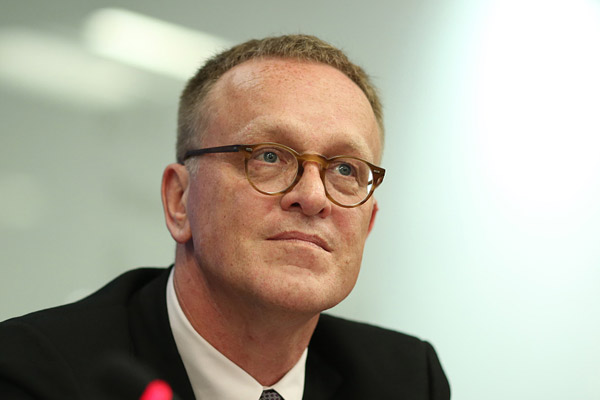
Editor’s Note: the Communist Party of China (CPC) will hold its 19th National Congress on October 18th. On the eve of the 19th National Congress, The China Journal interviewed Hao Fuman, director of the World Bank’s China, Mongolia and South Korea Bureau, and asked him to express his views on China’s economic development and global leading role.
What do you think is the greatest achievement of China in the past five years? What is the most remarkable change?
I think China’s leading position in the international community is the most remarkable achievement. China stepped onto the world stage and played a leading role in major issues such as climate change. Without China’s participation, the Paris Climate Agreement could not be reached. The top leaders of president, China, attended the UN Summit and expressed their support for the UN sustainable development goals.
In international development, China also supports the World Bank and its agenda. China has also established its own institutions to enhance the development financing capacity of international financial institutions. Finally, China’s "One Road, One Belt" initiative is a very important plan, which can bring great benefits.
As an official of the World Bank, I think the action to eradicate poverty in China is the most important development in the past five years. We believe that China will achieve the goal of eliminating extreme poverty in rural areas by 2020. The global goal is to eliminate poverty by 2030. It will be great for China to achieve this goal in 2020, that is, 10 years ahead of the world.
What three words would you use to describe China today?
I want to use three "C’s", which are confident, competent and caring. I feel that China is very confident. It has dealt with a very difficult economic situation — — Global financial crisis, and achieved a soft landing and maintained stability while maintaining a high growth rate.
China is capable (another key word) because it is very difficult to combine monetary policy and fiscal policy. In the past decade, China has implemented structural reforms and achieved these achievements.
Finally, I use the word "caring" because it is an important feature of China’s economic policy to promote poverty reduction at home and advocate inclusive development internationally.
What is the biggest challenge facing China? How to overcome it?
The situation in China is already very good. Over the past 35 years, China has maintained an extraordinary growth rate, and it is a great challenge to maintain this growth. I (also) believe that the reforms proposed by the Third Plenary Session, the Fourth Plenary Session and the Fifth Plenary Session of the 18th CPC Central Committee are all moving in the right direction, but challenges still exist. The most urgent thing is to deleverage the economy and reduce the dependence of growth on credit.
Secondly, World Bank President Jin Yong emphasized three "D’s" at the "1+6" round-table dialogue. This includes not only promoting innovation and discovering new technologies, but also eliminating the remaining distortions in the labor, land and capital markets, so as to make more effective use of human capital and material capital.
Third, China’s per capita GNP is US$ 9,000, and it needs to catch up with the OECD countries’ per capita GNP of US$ 40,000. Accelerating the diffusion of existing technology and management technology will still be an important kinetic energy for China’s economic growth. It will be a challenge to find an appropriate policy balance so that all factors can play a role.
Can China’s experience and practices be used to solve pressing global problems?
A lot will do. I think the most important thing is the reform and opening up proposed by Deng Xiaoping. The second is that China did not blindly copy or introduce a certain model from abroad, but created its own model. The third is the emphasis on inclusiveness. Deng Xiaoping said, "Let some people get rich first", and these people did it. However, China has always been concerned about the social poor, so that they can also benefit from the reform. I think this is very important for social stability.
Countries that do not pay enough attention to this point have experienced more unstable stages, distracting the attention of reform and weakening the foundation of growth and development.
What will China be like in the next five years? What is the long-term future of China?
I think the first century goal will be achieved, and China will build a well-off society by 2020. In the long run, I see opportunities everywhere. Any emerging economy in the history of the world has experienced difficult times. In particular, it is necessary to continue to pay attention to the macroeconomic aspects to maintain steady growth, because this will be the biggest risk. Nevertheless, on the whole, China will be able to maintain high growth in the next 15 to 20 years — — This seems to be possible.
As a senior official of an important financial institution, which departments do you think will have the most development opportunities?
If you look at China now, you will find many new growth points. There are emerging factors such as service industry, information and communication technology and financial technology.
Finally, China still has a strong manufacturing base. Although its relative importance has declined, China is still the largest manufacturing base in the world. China also has an emerging middle class.
People will get richer and have money to spend. In my opinion, the successful departments and industries will be those that can serve and meet the needs of China and the emerging middle class.
In a narrow sense, it is of course housing, mobility and urbanization. Broadly speaking, it is entertainment, convenient service, agriculture and safe food. Therefore, any industry and sub-industry that can meet the needs of the rising middle class will succeed.
What opportunities will the Belt and Road Initiative bring to China and the world?
We in the World Bank welcome this very much. We are actively contacting with the (China) government and other World Bank member countries involved in this project to make it a reality.
We believe that strengthening the interconnection among economies along the "Belt and Road" is a great opportunity and can be an important driving force for global growth.
At the first "Belt and Road" forum, the views were quite consistent. We believe that with the participation of all countries, we will see the reform of trade policies, trade facilitation and customs procedures, making cross-border trade easier. We will also see the reform of the investment environment. There are great opportunities here.
China and other countries hope to invest in the areas along the "Belt and Road", and the investment environment will definitely improve. A lot of infrastructure will be needed, but the policy environment for infrastructure investment must be suitable. A lot of reforms are needed to promote the success of the "Belt and Road". In addition, infrastructure construction itself needs a lot of financing, which is one of the key areas of the World Bank and its international financial groups for private institutions. We are studying relevant policies, industry investment environment and financing.
What are your expectations for the 19th National Congress of the Communist Party of China? What key issues will you pay attention to?
I believe many ideas and policies will be discussed. But I think it is very important to reiterate the basic direction of reform — — That is, the reform direction put forward by the third, fourth and fifth plenary sessions of the 18 th CPC Central Committee and the goal of eliminating extreme poverty in 2020.
China Daily reporter Xin Zhiming Translator: Wang Liangliang
1905 movie network news Are a group of "small characters" also eligible for the Spring Festival? Today, the director’s special feature of "The New King of Comedy", which is about to be released on the first day of the new year, was exposed. Director Stephen Chow personally demonstrated during filming, and his serious state was shown in the special. It can also be seen from this that the strict requirements of Stephen Chow as a director even made the actors experience a challenge to their own acting skills. In fact, in the eyes of Stephen Chow, there are no "small characters" in the play.
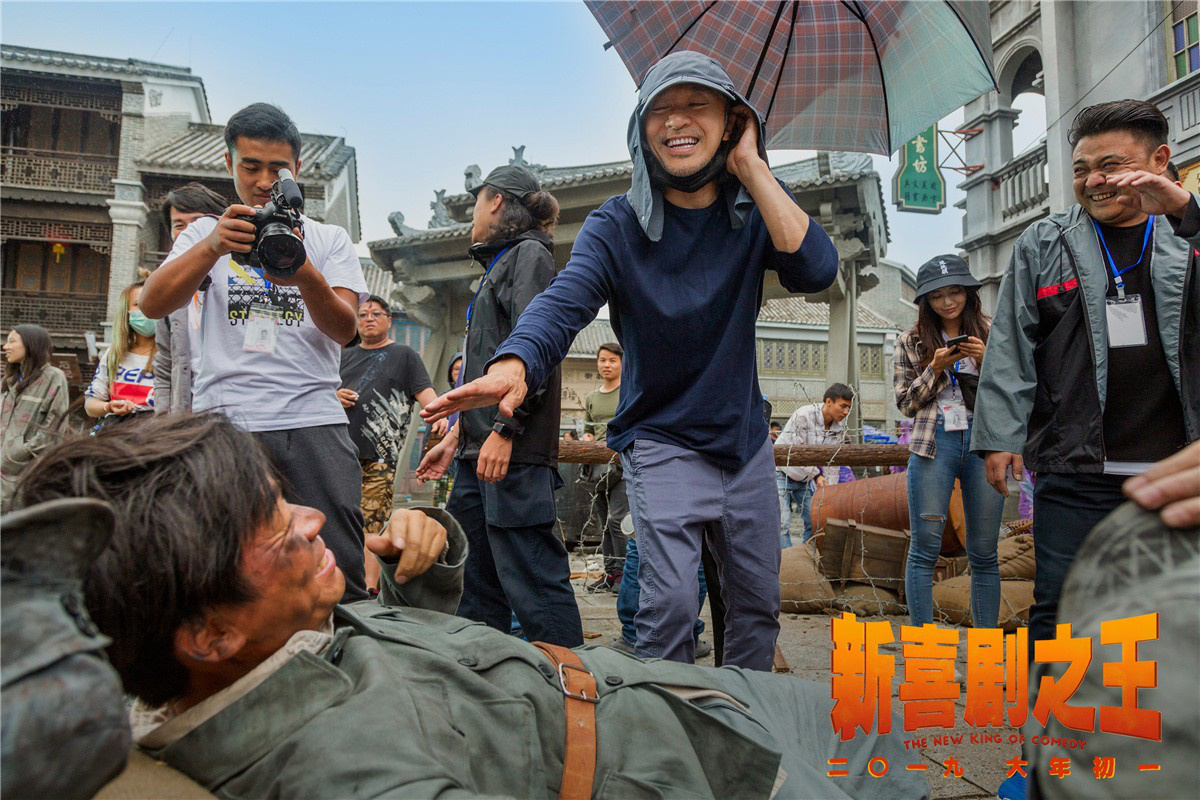
Personal demonstration of acting, Zhou Xingchi asked Wang Baoqiang to reshoot 50 times
Chow’s role as Yin Tianchou in the film 20 years ago has become a classic image in the hearts of countless movie fans. His serious dedication to filmmaking, both in and out of the play, is now reflected in the process of filming "The King of New Comedy" as a director. In the Chow special, many "small characters" appear, and Chow Xingchi has to personally demonstrate and guide the expressions and movements of each "small character". The actress, E Jingwen, expressed her deep feelings about working with Chow Xingchi. She said: "The director is very sensitive to the performance of the actors, and the requirements for details are particularly strict." Mr. Chow himself said that this hands-on approach was a habit of his own, saying: "I act more intuitively, and the actors can immediately understand what I want to feel, so they will have a lot of different things to act out."
In order to ensure that "The New King of Comedy" can meet Chow’s own requirements, many scenes have to be continuously remade. Chow is often seen shouting "click" in the special. Wang Baoqiang, the male lead in the film, admits that he has also experienced the most number of reshoots in his career. He said: "In the past, there were only a dozen at most, and I made more than 50 at one time for’The New King of Comedy ‘. I really enjoyed working with Xingye, and I hope to make it satisfactory to him."
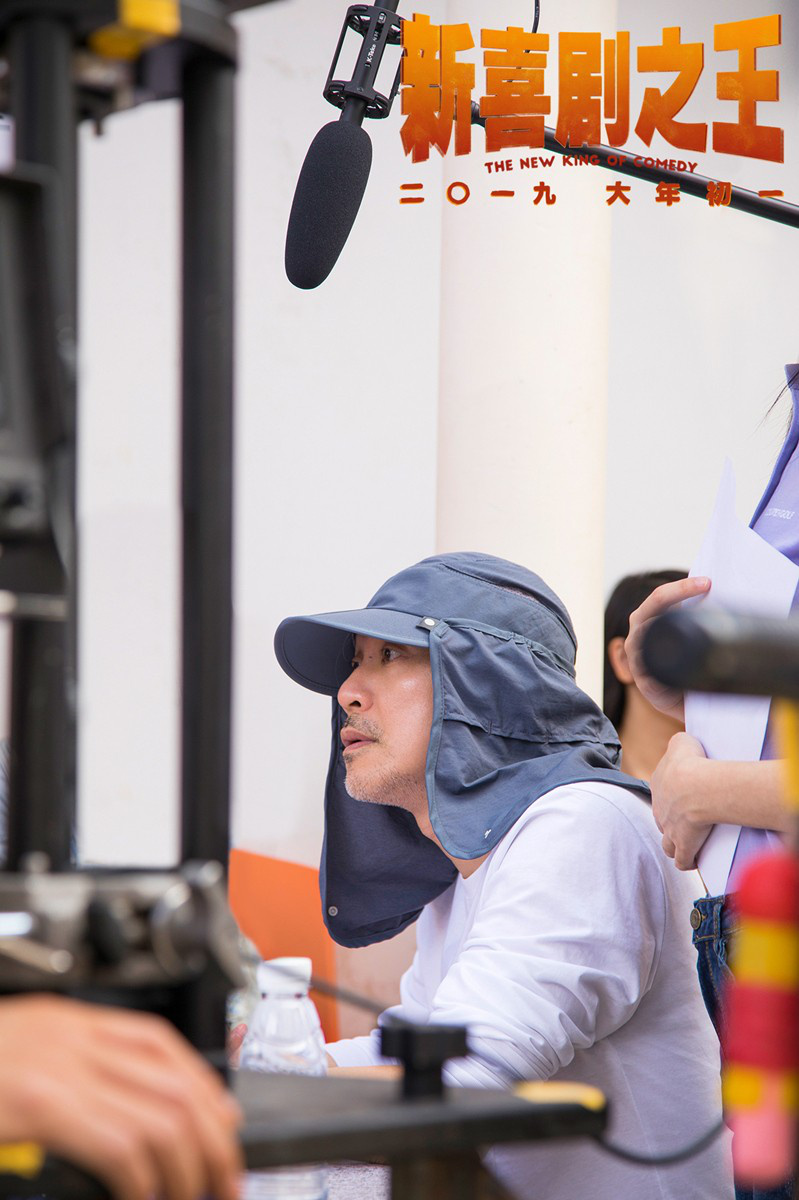
Struggle not to forget the original intention, Zhou Xingchi leads the "dead run" war against the Spring Festival gear
As we all know, the most famous thing in Stephen Chow’s movies is the rise of the little characters and the bitterness in their lives. Now, watching the many "little characters" in the special face the strict requirements of Stephen Chow, it is actually a struggle for them. The difficulties faced by the little characters in the play are just like the high requirements they faced when filming Stephen Chow. As the special shows, from the beginning, they were overwhelmed by the high requirements of the director, and the efforts of these "little characters" finally won Zhou Xingchi’s affirmation. "We must meet the requirements and standards of the director, and only by working hard can we meet his requirements," E Jingwen said frankly.
From the former Yin Tianchou to every character in "The New King of Comedy," Chow wants the little characters in the play to show a fighting spirit to live seriously and pursue hard. "In them you can see authenticity, confidence, seriousness and even seriousness and passion for what they do." Each character in the play is a great side of the little character for Chow Xingchi’s director. He said, "There are actually no small characters in a movie. No matter what the role is, they will have an impact on the final presentation."
"The New King of Comedy" was directed by Stephen Chow and starred Wang Baoqiang, E Jingwen, Zhang Quandan, Jing Ruyang, Zhang Qi and Yuan Xingzhe.



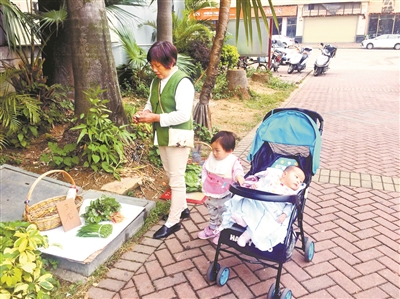
Guangdong positive energy
Text, map/Guangzhou Daily All-media reporter Wang Mingrun, Ceng Yi
At 6 o’clock in the morning yesterday, it was still not bright. Aunt Li Hong, who lives in the constellation of Jun ‘an Town, Shunde District, was busy in the vegetable field opposite the community. At 7 o’clock, seasonal vegetables such as oil wheat vegetables, sweet potato leaves, amaranth and leeks that have just been picked from vegetable fields are fresh "listed". The channel of vegetables "listing" is a bit special: a vegetable basket, a mineral water bottle with money and a priced card, leaving out the intermediate links and being left unattended. This is a well-known place in Jun ‘an and even Shunde, and it has persisted in "unmanned food stalls" for 8 years.
Interestingly, the "founder" of the food stall has moved out of the community, but the unmanned food stall has become more and more prosperous: from the first stall to the eight stalls at its peak, many residents nearby have become loyal fans of this unmanned food stall for eight years. Unmanned food stalls, all supported by the "integrity" of buyers, have successfully persisted for 8 years, and they have become more and more prosperous. What are the reasons for this? Our reporter conducted a verification visit.
Opening a stall in the mother-in-law’s family is rich
Ouyang Zugui, the property management manager, has worked in the community for nearly 10 years. According to him, the "unmanned food stall" was put on sale by an aunt in her 50 s eight years ago. She lives in this community with her son and daughter-in-law. Because her wife died and she was bored, she planted vegetables on this wasteland. Sometimes, it’s a pity to throw away all the vegetables, but I’m too busy taking care of my grandson to sell vegetables, so I came up with the idea of "selling vegetables by myself". Moreover, she can’t read, and the price of vegetables is written by her son. What makes people sigh is that this aunt’s family is very good, and her son’s business is doing well and filial piety. Selling vegetables is purely for finding something for himself, and serving the community residents.
Interestingly, the "founder" of the food stall has moved out of the community, but under her drive and influence, the "unmanned food stall" has become more and more prosperous. According to reports, when the "unmanned food stall" was at its peak, there were 8 "competing" at the same time. Yesterday, when the reporter came to the door of the community, he found that there were still three companies operating.
In 2009, Li Hong came to Jun ‘an with her children. "At that time, I came to take care of my children and was busy every day." She recalled. Once, on the way to send her grandson to school, she found several food stalls at the intersection of entering and leaving the community. To her surprise, no one sold the food stall. Li Hong inquired in many ways and found that it was an old resident in the community who opened up a small piece of wasteland opposite the community and planted vegetables. Almost at the same time, Aunt Kong Lan from Shaoguan moved in with her children, so they joined the "unmanned food stall" together.
In their words, "I always want to do something, do something. Growing vegetables is my old job, not to make money, but I think wasteland can’t be wasted." Aunt Li Hong said.
Did "theft by dishonesty" happen?
In recent years, some residents who run "unmanned food stalls" have joined and some have quit. "The people who grow vegetables here are retired residents, and some residents quit planting because they have to take care of their grandchildren." Li Hong said that growing vegetables is one of his pastimes. Every morning from 7: 00 to 12: 00 and from 16: 00 to 18: 00, the "unmanned food stall" will "open its doors for business" on time. Through this "unmanned" business model, you can save 7 hours a day and at least 2520 hours a year, equivalent to 105 days.
In Li Hong’s memory, during the soaring price of ginger a few years ago, someone once dug up the ginger in the vegetable field overnight. "But this is the only case in six or seven years." However, "unmanned food stalls" have also been "stolen". The so-called "theft", Li Hong explained, refers to the incident of unequal prices. "Sometimes, when the stall is closed, it is found that the food money is less; Sometimes, you will find more money. " Li Hong said that since the beginning of this year, there have been five "theft" incidents, and there were about 10 cases last year and the year before last. To this end, the reporter also calculated an economic account for her "unmanned food stall". Assuming that the stall sells 10 handfuls of vegetables every day, there are 10 "theft" cases in a year, accounting for only 0.27%, which is a small probability event.
Why has the unmanned food stall been successfully operated for 8 years?
"Good deeds drive good deeds, and kindness drives kindness."
What is the reason for the successful operation of Jun ‘an, an "unmanned food stall", for eight years? The reporter learned that the unmanned food stalls are placed outside the community, and many strangers patronize the community except for living outdoors. After the reporter’s investigation, one of the residents gave the best answer, "Good things drive good things, and kindness drives kindness".
There are four reasons for the successful operation of Jun ‘an unmanned food stall:
First, the "role model", the first aunt’s successful land reclamation and the successful operation of unmanned food stalls have promoted an atmosphere of "good deeds and honesty". Soon, two aunts, Li and Kong, followed suit, and the residents also cooperated, all trying to continue the good deeds;
Secondly, the "beautiful initial intention" of the aunt who grows vegetables, all the aunts who grow vegetables, are not for making money. Kong Lan said: "We can’t finish growing vegetables ourselves, so we want to give them to the residents." In aunt’s mind, it is not important to give money or not, but to share the fruits of labor is the happiest;
Thirdly, "respect for hard work", the unmanned food stall in Jun ‘an has a very big feature. The unmanned food stall is "on the left" and the aunts work "on the right". Many residents can see their aunts working hard when they buy food: the water is picked by themselves, the fields are plowed by themselves, and the insects are removed by themselves. Moreover, it is still a "sunny vegetable field". Aunties insist on using plant fertilizers instead of chemical fertilizers. Residents are all in the eyes. Resident Chen Ayi told reporters, "They have worked so hard to grow vegetables and only sold a lot of 3 yuan. How dare you buy food without giving money?"
Fourth, "the pride of honesty", the residents nearby are "proud" of this unmanned food stall, and think that their community is harmonious, so almost everyone is maintaining it, and some residents specially bring their children to buy food to give money, which is to let the children have a special "honesty lesson".
Expert: unmanned sales ultimately depend on the credit system.
The popularity of Jun ‘an "unmanned food stall" makes people see the light of honesty shining. Wu Jing, an associate professor at the School of Management of Jinan University, believes that the reason why unattended food stalls can persist for a long time is the embodiment of the honesty and trustworthiness of local residents. However, in her view, there are essential differences between the concepts of "unmanned food stalls" and the "unmanned supermarkets" that are emerging on the Internet. She believes that unmanned supermarkets rely more on modern scientific and technological means, with intelligence and intelligence as the means. Many places in Guangdong have begun to have layouts and pilots, while "unmanned food stalls" are more concerned with personal morality of honesty and trustworthiness.
Wu Jing believes that the unattended business mode relying on honest payment needs certain conditions, such as low commodity value, which is more suitable for closed systems or small-scale consumer groups. Once there are more people, a perfect credit system is needed to maintain business.

Xiaogang Feng, the great director, collaborated with Iqiyi on an online drama, which was scolded to pieces after two days online. This film "The North Road to the South" is like a bomb that accurately hits the audience’s thunder spot, directly tearing off the fig leaf of domestic modern urban dramas, and making the fundamental problems of film and television drama producers in shooting concepts lose their hidden space.


Noble life suspended in the air
The life shown in TV series seems to be getting farther and farther away from us. It is said that it is an urban modern drama, which opens the eyes of the audience as much as fantasy through science fiction movies. At a casual moment, people can always ask: "Do I really live in the same time and space with them in TV series?" .

By showing the story of a group of women who have achieved their own success in their struggle, North Crossing the South intends to open a restaurant in partnership after an encounter. From the theme, it seems that there is no problem at all, and it seems to be a feminist perspective work that emphasizes struggle and friendship. The leading actors invited are also popular flowers in the entertainment circle.

However, the basic configuration does not mean that this drama can deduce a wonderful history of urban struggle. First of all, in terms of people’s design, it began to create a bunch of "dummies" in a clever but stupid way.
First of all, Dai Xiaoyu, played by Gina, studied in Northern Europe. When her boyfriend, who had already talked about marriage, was found to have not divorced his ex-wife, she packed up her things and left without saying goodbye. She returned to Beijing from Norway, lived in her grandmother’s big villa, and soon found a job in public relations for a film and television company through a friend’s dinner.

Not to mention that international students have been involved in attracting people from Nordic countries, it is also very shocking to see this smooth work process after returning home.
After being recommended by a friend, she hit it off at the dinner table. The next day, she signed a contract and went directly to organize a dinner with a big broker, and convinced everyone with her own set of words, as if she was the only one who could see the root of the problem at the dinner table. Not only was she not a fireworks worker who lived in northern Europe for several years, but she also quickly knew the details and operation mode of the film and television entertainment circle after returning home, which was hard to help people sigh.

It is said that you can’t look at the public relations industry with stereotypes, but you try your best to express all kinds of words and routines on the wine table. The arbitrariness and willfulness of talking about business with the wine table dispels the duties and working methods of an industry, making the audience think that practitioners can be like Dai Xiaoyu in the play.
Using "high emotional intelligence" to challenge brokers at dinner, but ignoring that most practitioners are conscientious in going through the process, making statements and signing contracts, which deepens the stereotype of the industry for the infinite scenery of the protagonist, which is a very failure in TV dramas.
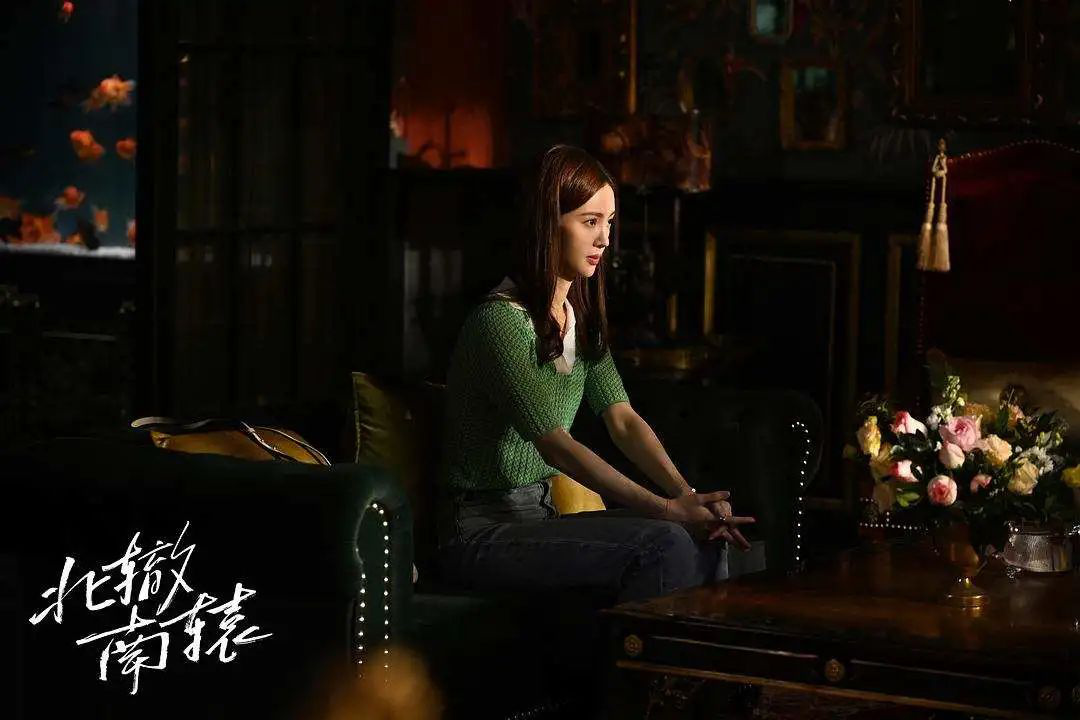

Don’t spend money on social problems.
And another woman, You Shanshan, is a highly effective and capable woman with rich life experience, so that she can write two novels and make a TV series independently. Wang Luodan plays her role as the backbone in the play, and she leads the meeting of several friends and the investment in the restaurant in the opposite direction.

Her appearance was also astounding. When shopping in the supermarket, she met Si Meng, who had met by chance. Originally, she was a nodding acquaintance but gave birth to a whole story line because she lost her wallet. She described herself as a dropout at the University of International Business and Economics, a junior who dropped out of school. Later, she chose to divorce because of the breakdown of her relationship with her husband’s family. After the divorce, she became a strong woman engaged in investment, and started her own company with high income and a beautiful life.

Tell the identity and story of your single mother so gently and skillfully, and seem to regard this as a small difficulty that can be easily overcome in life. In three or two sentences, the painful and complicated social issues are turned into the talk of urban petty bourgeoisie life after dinner, which virtually eliminates the seriousness of social problems.
I didn’t touch the difficulties that real single mothers will encounter in real life at all. I didn’t talk about the hard work of starting a business with children. Instead, I used "making a lot of money" as an enviable footnote to show my superior ability, as if I could really become a successful woman like You Shanshan easily.
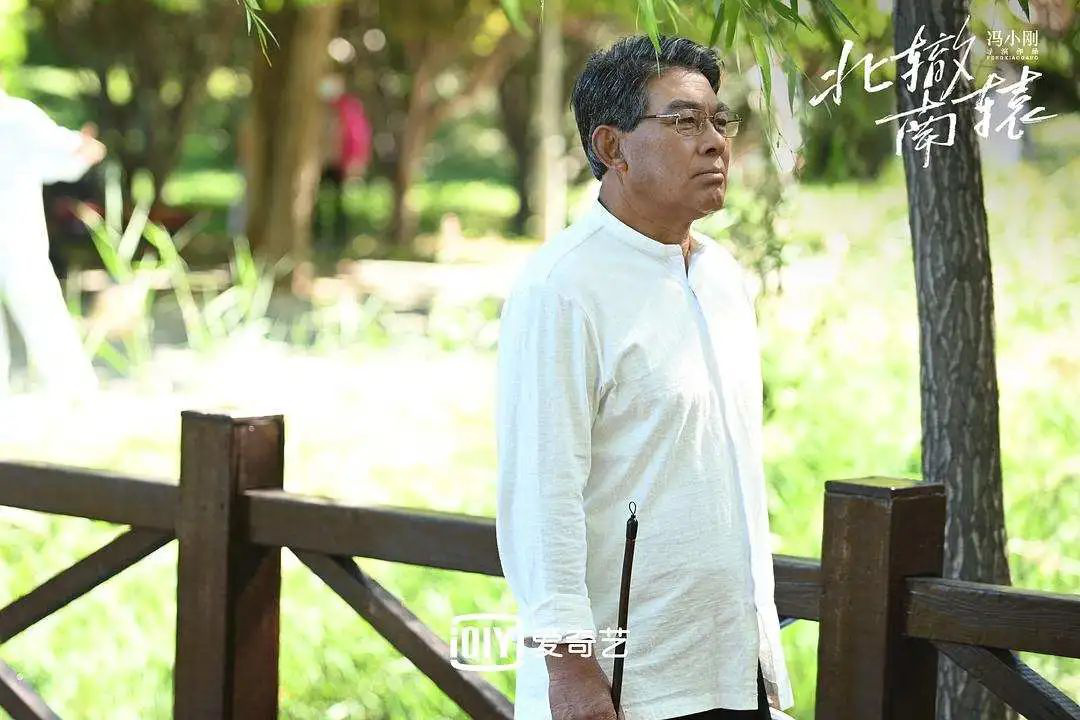
This conversation between You Shanshan and Si Meng is tantamount to stepping on the pain of other single mothers who have suffered in life, with the voice-over of "You are just not good enough to become female presidents".
Such a TV series that discounted the name of women’s struggle history not only failed to help women get a better living condition, but deepened the suffering of ordinary women with simple stories of rich people, which really made people feel very shameful.

At first glance, it’s amazing that she is a powerful woman who is engaged in business, but after careful scrutiny, such a person’s setup is not reasonable, but in fact there are many loopholes.
Not to mention why the big boss who runs the company looks very idle, as if the company affairs can be easily completed between chatting and occasional work. Her simple and profound behavior with friends will make people wonder: can such a "leaky spoon" character really make a big business?
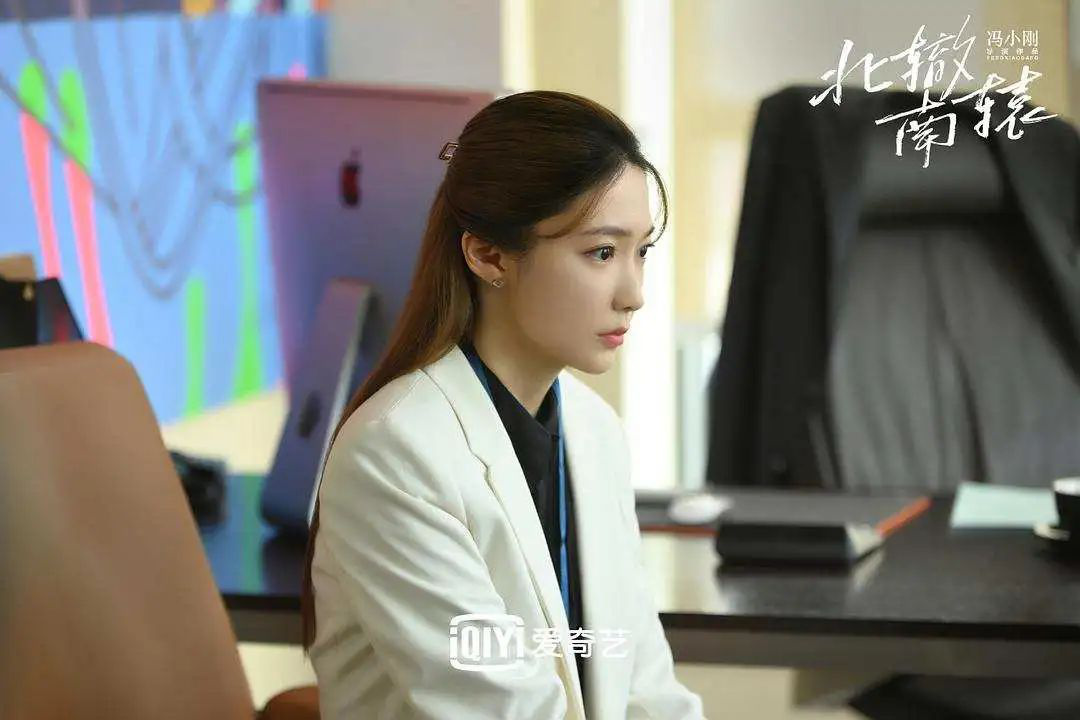
I didn’t meet Simeng twice, because the other party mentioned that the refrigerator in his home was broken and needed to be repaired, so he directly took the workers and a brand-new refrigerator to install it, and didn’t ask the other party’s opinion. This attitude of "I think I am helping you" itself contains arrogance and irrationality that I feel too good about myself.
On the other hand, most of her life experiences were shaken off, and the "sense of social distance" disappeared directly in her world. In order to pave the way for the follow-up plot, the feelings between the two people were quickly brought closer, but it seemed just inexplicable. There is not enough convincing emotional foundation to shape the friendship between the two protagonists by playing house with children, which makes the plot of "opening a restaurant together" perfunctory.


Don’t struggle if there are not enough characters.
The funny thing is that in TV series, even the characters of grandparents have begun to roll in, and ordinary old people are no longer within the consideration of directors and screenwriters, but must focus on reflecting what kind of fairy life the fashionable and young rich grandmother has lived.
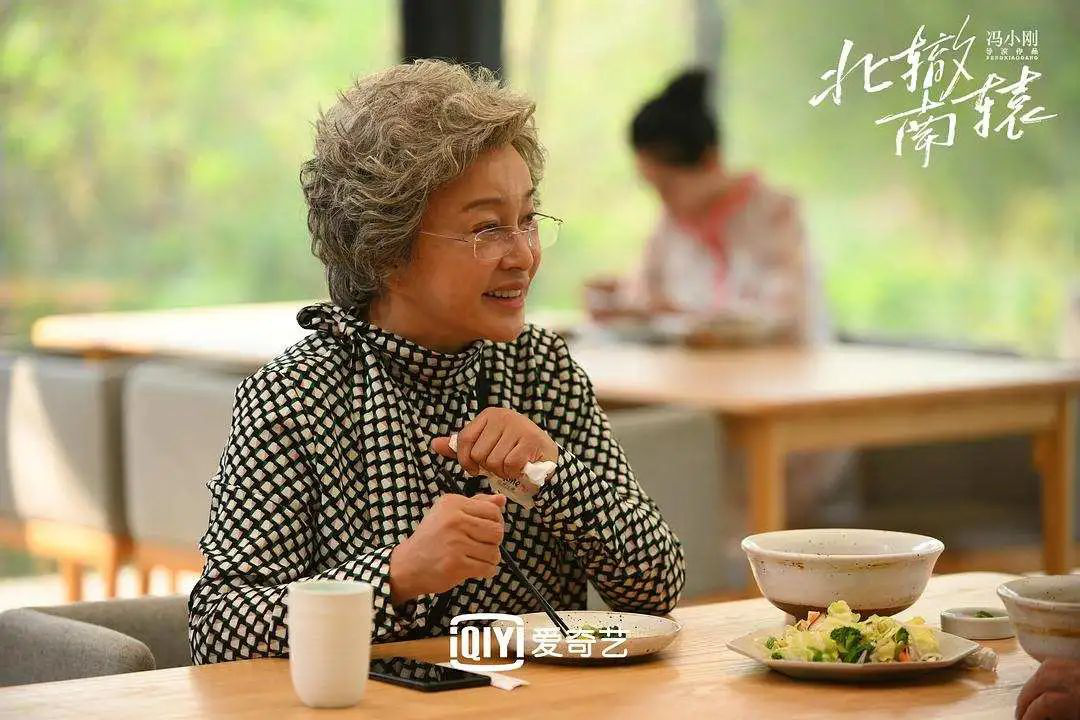
In the play, Dai Xiaoyu’s grandmother lives alone in a big villa somewhere in Beijing. Beautiful French windows and wooden floors show the word "rich" in every detail. Her hobby is to play piano and jazz at home and indulge in it. Her attitude towards her grandchildren is so enlightened that she has no mentality of the elderly at all. Communication and interaction are also like treating friends instead of elders and children. There is a touch of kindness in the ceremony, which glows the spirit of "the elderly in the new era" from the inside out. Otherwise,
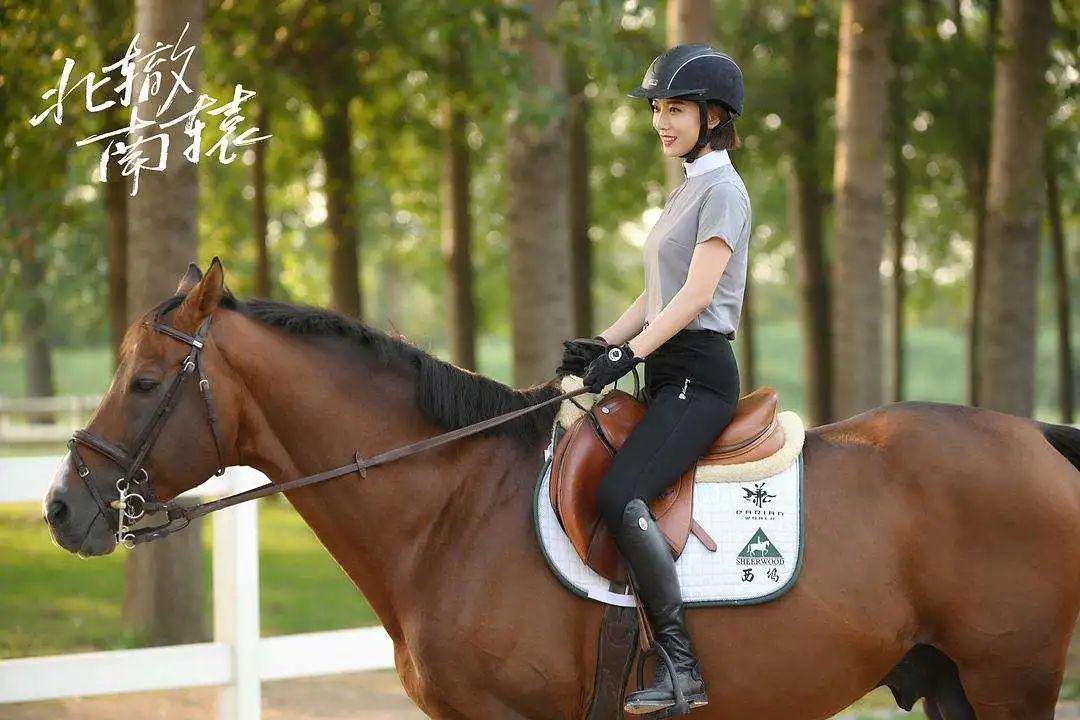
Therefore, can the current online drama stop stigmatizing the stories of urban women? From ode to Joy to diametrically opposed, it is becoming more and more grandiose and boring. From two rich girls in the community to the whole drama, they are talking about the speculative state of superior life. Perhaps the former audience will be moved by these exquisite lives, but now it seems dull and increasingly ungrounded TV dramas have fully satisfied the audience’s voyeurism, even to the extent of aesthetic fatigue.
